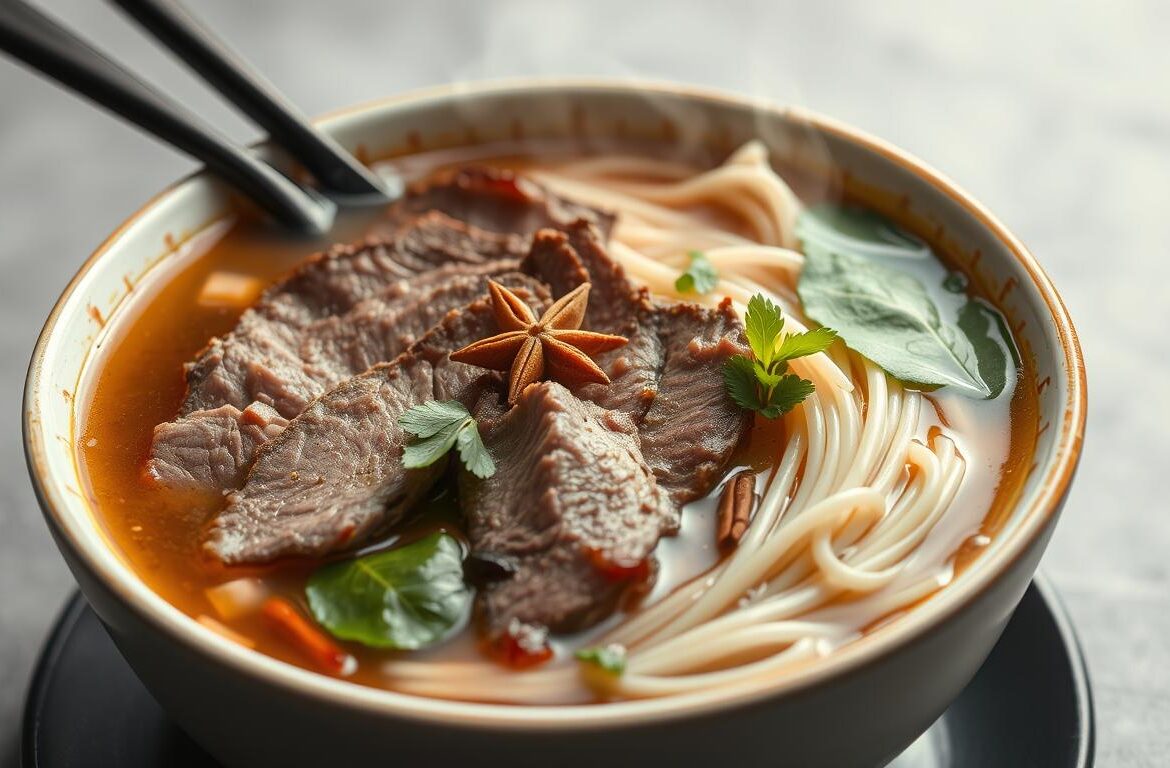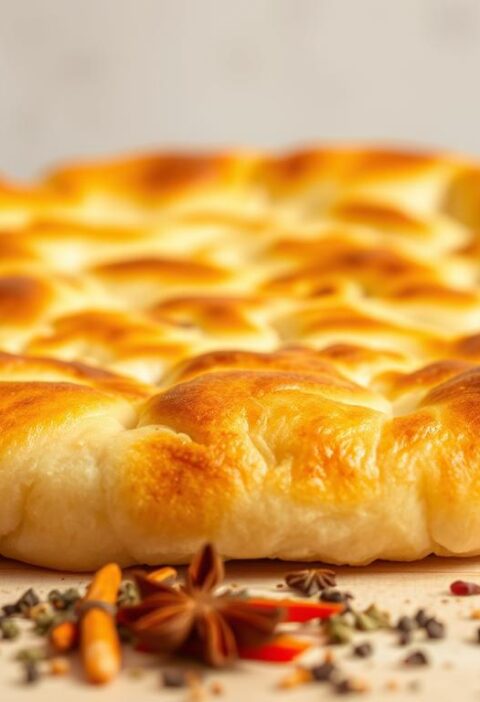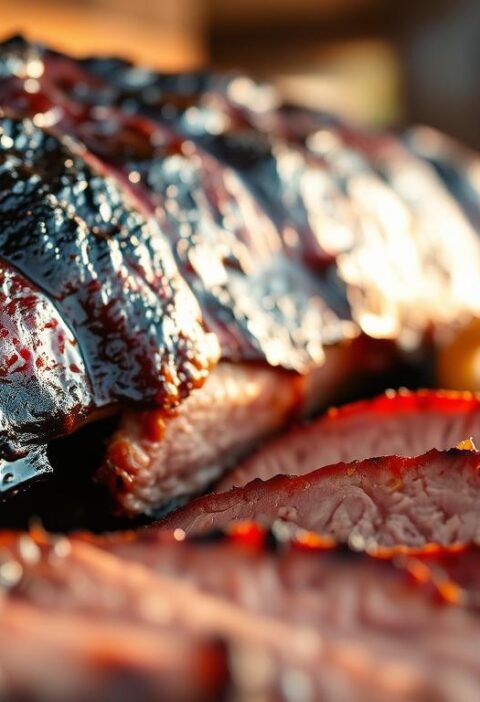You’ve probably fallen in love with Vietnamese food, like the famous noodle soup. Authentic pho is more than food; it’s a warm experience for the heart and soul. The key is a rich and flavorful broth that’s both healthy and tasty.
Making this traditional Vietnamese dish from scratch might seem hard. But with the right help, you can make Vietnamese recipes like a pro. We’ll show you how to make an authentic pho broth that will be a favorite in your kitchen.
Key Takeaways
- Understanding the cultural significance of Pho
- Learning the essential ingredients for authentic Pho broth
- Step-by-step instructions for making traditional Pho broth
- Tips for customizing your Pho to suit your taste
- Exploring variations of Pho from different regions
The Cultural Significance of Pho in Vietnamese Cuisine
Pho is more than a beef noodle soup; it’s a symbol of Vietnam. It’s a favorite dish in Vietnamese recipes loved worldwide.
Pho’s importance goes beyond its flavor. It’s tied to Vietnamese culture and history. Exploring Pho reveals its deep heritage and role in Vietnamese food.
Origins and History of Pho
Pho started in Northern Vietnam in the early 1900s. It mixed local and foreign flavors, becoming a street food for workers.
Some key points about Pho include:
- It began in the early 20th century
- It was influenced by Chinese and French cooking
- It was a cheap meal for workers
Regional Variations of Pho Broth
As Pho grew, different regions made their own versions. The North has a clear broth, while the South’s is sweeter and spicier.
Some notable variations are:
- Pho Bac (Northern-style Pho): Known for its clear broth and simple flavors
- Pho Nam Bo (Southern-style Pho): Often sweeter and with a variety of toppings
These differences show Pho’s flexibility and diversity. It’s a vibrant part of Vietnamese food culture.
Essential Ingredients for Authentic Pho Broth
Pho broth’s true taste comes from its ingredients. To make a delicious beef noodle soup, you must know the key parts of an authentic Pho. The right ingredients are key to its flavor and smell.
Meat and Bones Selection
The base of a great Pho broth is the meat and bones. You need top-quality beef bones like marrow and oxtail. These bones simmer for a long time. They add flavor, collagen, and marrow to the broth.
Aromatic Spices and Herbs
Aromatic spices and herbs add warmth and depth. Spices like star anise and cinnamon are used. Herbs like ginger and onions are charred to enhance their sweetness. These are key to Vietnamese cuisine‘s unique taste.
Additional Flavor Enhancers
Additional flavor enhancers make the broth even better. Fish sauce, rock sugar, and salt are added. They boost the umami flavor and balance the sweetness and salt. The quality and amount of these ingredients matter a lot.
| Ingredient Category | Key Ingredients | Purpose |
|---|---|---|
| Meat and Bones | Beef bones (marrow, oxtail, beef neck bones) | Rich texture, depth of flavor |
| Aromatic Spices and Herbs | Star anise, cinnamon, ginger, onions | Warmth, complexity, sweetness |
| Additional Flavor Enhancers | Fish sauce, rock sugar, salt | Umami, balance of sweetness and saltiness |
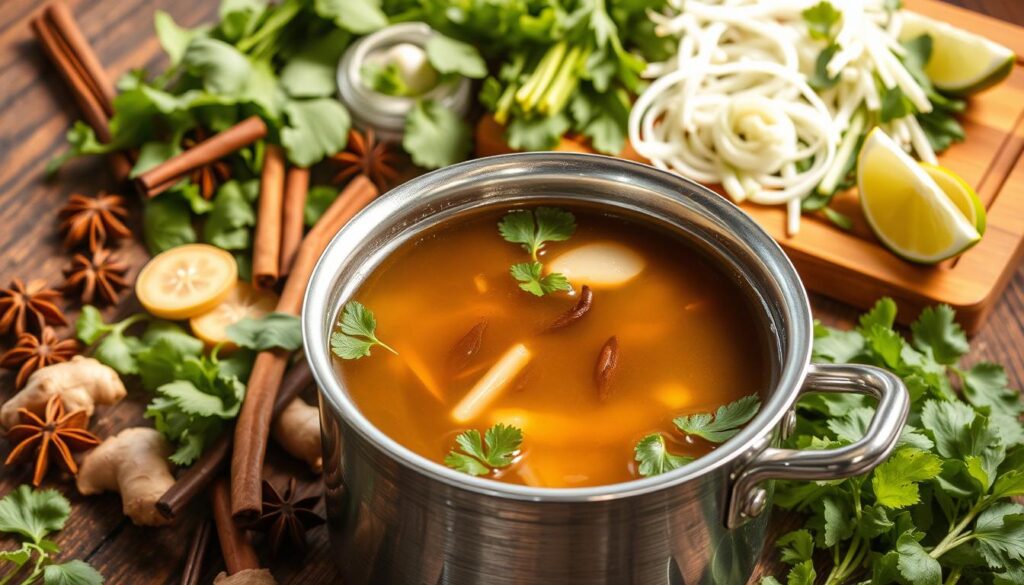
Equipment and Preparation for Making Pho Broth
Making traditional Pho broth needs some key equipment and prep skills. To make real Vietnamese Pho, you must prepare your kitchen with the right tools and ingredients.
Required Cookware and Tools
You’ll need a large stockpot to simmer the broth. A stockpot of at least 8 quarts is best for lots of bones and ingredients. You also need charring utensils like tongs or a grill for onions and ginger. A spice grinder is key for grinding spices to release their flavors.
Ingredient Preparation Techniques
Getting ingredients ready right is key for a tasty Pho broth. This means parboiling and cleaning the bones to get rid of impurities. Also, charring the aromatics and toasting the spices to make them more flavorful. Knowing these steps helps make a clear and tasty broth.
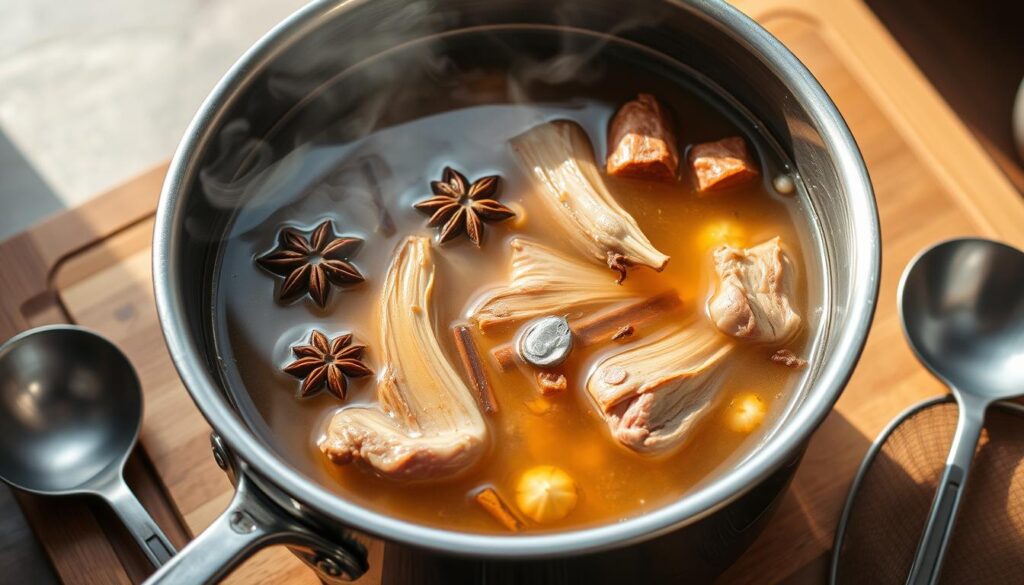
| Equipment/Technique | Purpose |
|---|---|
| Large Stockpot | Simmering the broth |
| Charring Utensils | Charring onions and ginger for added depth |
| Spice Grinder | Grinding spices for flavor release |
| Parboiling | Cleaning bones to remove impurities |
| Charring Aromatics | Enhancing flavors of onions and ginger |
Step-by-Step Traditional Pho Broth Recipe
Making traditional Pho broth takes patience and detail. With the right ingredients and tools, you’re ready to start.
Parboiling and Cleaning the Bones
First, parboil the bones to remove impurities. This makes the broth clearer. Put the bones in a big pot, cover with cold water, and boil. Boil for 5 minutes, then drain and rinse under cold water.
Charring the Aromatics
Charring onions and ginger adds depth to your Pho broth. Place them on an open flame or in a dry pan until charred. This step boosts the flavor of your authentic Pho.
Simmering Process and Timing
Now, simmer the broth. Mix the bones, charred aromatics, and spices in a pot. Add enough water to cover everything and boil. Then, lower the heat to simmer. Simmering can take 1 to 3 hours, depending on the bones and desired broth richness.
Skimming and Clarifying Techniques
Skim off impurities that rise during simmering. Use a skimmer or spoon to remove foam and fat. For a clearer broth, strain it through a fine-mesh sieve with cheesecloth after simmering.
Seasoning and Adjusting Flavors
Season your Pho broth to taste. Use fish sauce, sugar, and spices. Taste and adjust the seasoning. Aim for a balanced flavor that’s rich and aromatic, like a good beef noodle soup.
| Step | Purpose | Timing |
|---|---|---|
| Parboiling Bones | Remove impurities | 5 minutes |
| Charring Aromatics | Add depth | Until charred |
| Simmering | Extract flavors | 1-3 hours |
Follow these steps to make a delicious authentic Pho broth. It’s perfect for your beef noodle soup.
“The secret to a great Pho lies in its broth, which is both rich and delicate at the same time.” – Pho enthusiast
Common Mistakes to Avoid When Making Pho Broth
To make a rich and flavorful Pho broth, knowing common mistakes is key. Making authentic Pho is more than just a recipe. It’s about the details that make a good broth great.
Let’s look at some big mistakes and how to dodge them.
Temperature Control Issues
Keeping the right temperature is critical when simmering Pho broth. If it boils too hard, it gets cloudy. To fix this, simmer gently. Watch the heat to keep it just below boiling.
Ingredient Balance Problems
Getting the flavors right is key in Vietnamese recipes like Pho. Too much of one spice can mess up the taste. Taste and adjust often to keep the flavors balanced.
Timing and Patience Factors
Making Pho broth takes time. Rushing it can make the broth taste flat. Let it simmer for 1-2 hours to get all the flavors. Don’t rush this step for the best taste.
By avoiding these mistakes, you can make a Pho broth that’s both tasty and authentic to Vietnamese cuisine.
Serving and Storing Your Homemade Pho Broth
Now you’ve learned to make traditional Pho broth. It’s time to enjoy what you’ve made. Serving Pho is an art, and your homemade broth lets you create a real Vietnamese beef noodle soup experience.
To serve, cook your rice noodles as the package says. Slice your beef (rare, well-done, or brisket). Then, put everything together with your hot Pho broth, toppings, and fresh herbs. You can make your Vietnamese recipes your own way.
For storing Pho broth, keep it in the fridge for up to 3 days or freeze it. Cool the broth, then put it in airtight containers. Store it in the fridge or freezer. When you want more, just reheat it and enjoy with noodles and toppings.
Having homemade Pho broth in the fridge or freezer is great. You can make a delicious, comforting bowl of beef noodle soup whenever you want. Try different Vietnamese recipes and make Pho a favorite in your kitchen.

